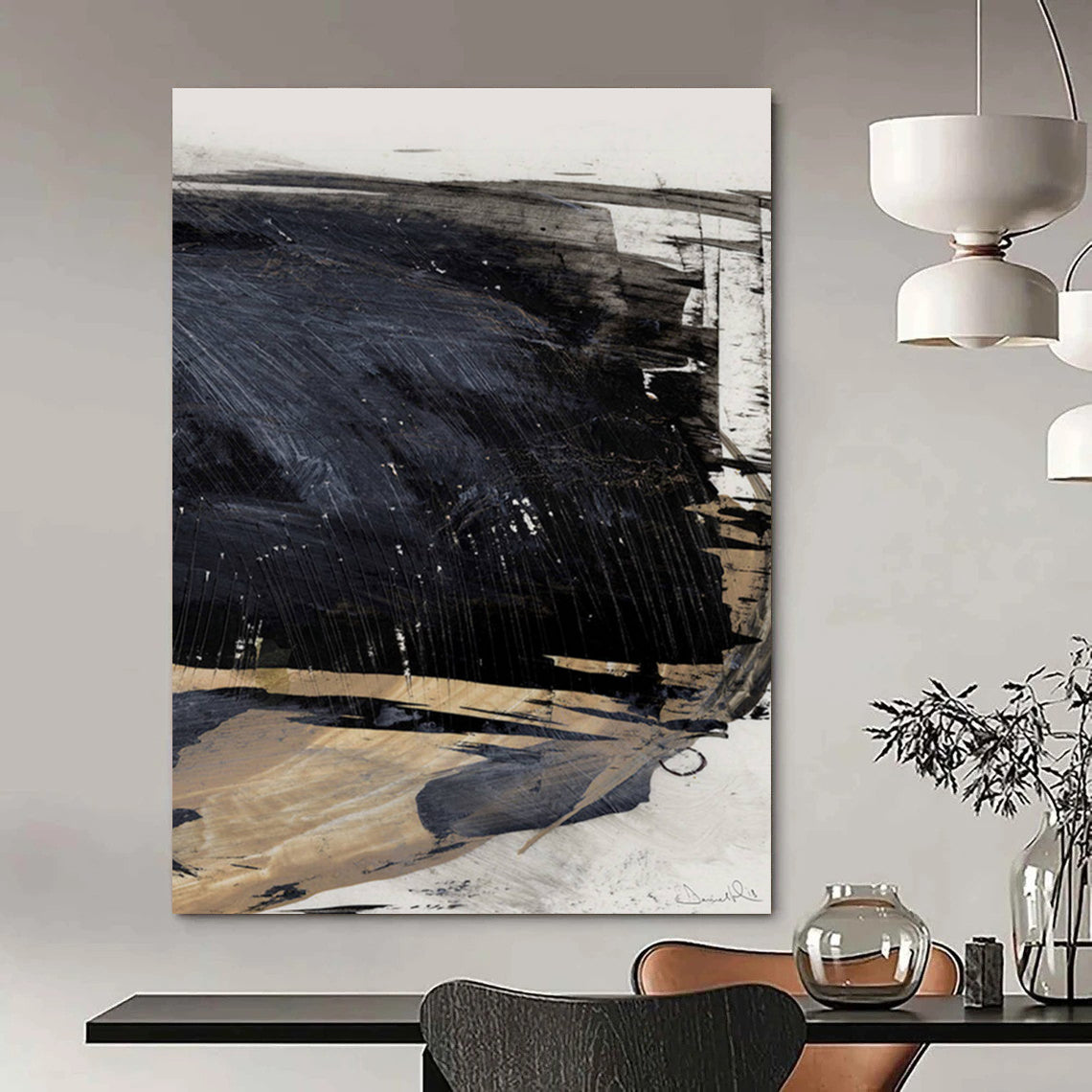Beige Abstract Art offers an elegant and understated approach to modern abstraction, blending softness with sophistication. Its neutral, warm tones create a calming, harmonious atmosphere, making it an ideal choice for a variety of interior spaces. Far from bland, beige abstracts capture texture, form, and emotion with subtlety and depth, allowing viewers to experience abstraction in a gentle, inviting way.
Beige Abstract Art in the Context of Art History
Abstract art has evolved through many expressions, embracing bold colors and shapes as well as nuanced palettes. Key figures such as Wassily Kandinsky and Kazimir Malevich pioneered the liberation from recognizable representations toward pure form and color that express inner emotions and spiritual truthsTen of the Most Famous Abstract Painters of all Time. While Kandinsky famously explored vibrant hues, artists like Agnes Martin brought a quieter, more delicate palette into abstraction, often working with beige, cream, gray, and similar tones. Martin’s minimalist grids, such as in her work The Tree (1964), embody purity and contemplative harmony, suggesting that simplicity can express profound emotions.
Helen Frankenthaler’s innovative "soak-stain" technique produced soft, flowing, and translucent forms, frequently in pastel or neutral colors, reinforcing the expressive possibilities of beige and muted tones in abstract art. Frankenthaler’s work connects the delicate interplay of color and texture with natural inspiration — landscapes and light — an approach that resonates with many contemporary beige abstract artists Helen Frankenthaler’s Techniques and Artworks.

Why Choose Beige Abstract Art?
Beige abstracts bring a sense of warmth without overpowering a space. Neutral tones like beige provide a versatile backdrop that complements almost any interior design scheme. Whether paired with darker shades like brown and gray or contrasted against brighter accent colors such as turquoise, raspberry, or powder pink, beige abstracts maintain balance and sophistication.
As described by art galleries specializing in modern abstract paintings, beige’s many shades — from warm milky beiges to cool grayish-beiges — make it adaptable for offices, living rooms, hallways, and bedrooms. These paintings not only visually expand a room but also create a relaxing, inviting atmosphere. Larger canvases in beige can add subtle elegance, while smaller sizes serve as perfect accent piecesBeige Abstract Paintings For Sale - Trend Gallery Art.
Techniques and Textures in Beige Abstract Painting
Artists working with beige abstract art often focus on texture and layering, using contrasts in mattes and gloss, smoothness and roughness, to evoke tactile emotion. The nuanced variations within beige tones allow artists to guide the viewer’s gaze, emphasizing softness or structure. Sometimes beige abstracts harness geometric patterns inspired by minimalism and modernism or explore organic, fluid brushstrokes that echo natural forms.
Search results highlight how beige abstract paintings can be paired with other earth tones or vibrant hues, broadening their compatibility and accentuating their visual impactBeige & Brown Abstract - Artvista Gallery. This interplay of subtle color harmony and textural depth is what makes beige abstract art a compelling choice in both private and public spaces.
Contemporary Relevance and Use in Interior Design
Today, beige abstract art complements the growing trend of neutral interiors that prioritize calm and understated elegance. As homes and workplaces seek harmony and comfort, beige abstracts serve as timeless components of art collections. They easily integrate with modern furnishings while retaining enough subtle interest to serve as conversational focal points.
A useful resource on integrating black, white, and beige art into sophisticated interiors explains that beige abstracts work best when their gentle hues are contrasted effectively with surrounding elements—whether it’s wall color, furniture, or other artworkDecorating with Black and White Prints for Sophisticated Interiors. This insight translates well to beige abstracts, where the balance of neutrals creates a serene yet visually rich environment.
Further Reading for Enthusiasts and Collectors
To deepen your appreciation for beige abstract art, consider exploring these authoritative sources that connect both historical context and contemporary practice:
-
Learn about the history and innovations of abstract painters who influenced modern minimalism and neutral palettes: Ten of the Most Famous Abstract Painters of all Time
-
Discover how to use beige and neutral abstracts in interior design effectively: Beige Abstract Paintings For Sale
-
Explore the role of beige and brown abstracts in blending color and form: Beige & Brown Abstract - Artvista Gallery
-
Explore composition and texture techniques in modern abstract art: Exploring Abstract Painting Techniques
-
Gain insights into curating art with a focus on neutral and earthy palettes: How to Decorate with Abstract Art
FAQ
What is Beige Abstract Art?
Beige Abstract Art comprises artworks that use various shades of beige and neutral tones to create abstract compositions, focusing on texture, form, and subtle emotional expression.
Why is beige popular in abstract art and interior design?
Beige offers warmth and neutrality, making it easy to coordinate with different colors and decor styles. Its calming appearance fosters a relaxed environment while maintaining elegance.
Which famous abstract artists used beige tones?
Artists like Agnes Martin and Helen Frankenthaler incorporated muted, pastel, and beige tones in their abstract works, emphasizing minimalism, harmony, and natural inspiration.
How do artists create depth in beige abstract paintings?
By layering paint, experimenting with textures and gloss, and using subtle tonal variations, artists create complex, dynamic compositions within a restrained color palette.
Can beige abstract art fit into any interior style?
Yes, its neutral and adaptable tones complement everything from minimalist and modern to traditional and eclectic interiors, making it a versatile choice for wall art.
Beige abstract art continues to inspire both artists and collectors worldwide, offering a sophisticated yet gentle way to engage with abstract expression.

